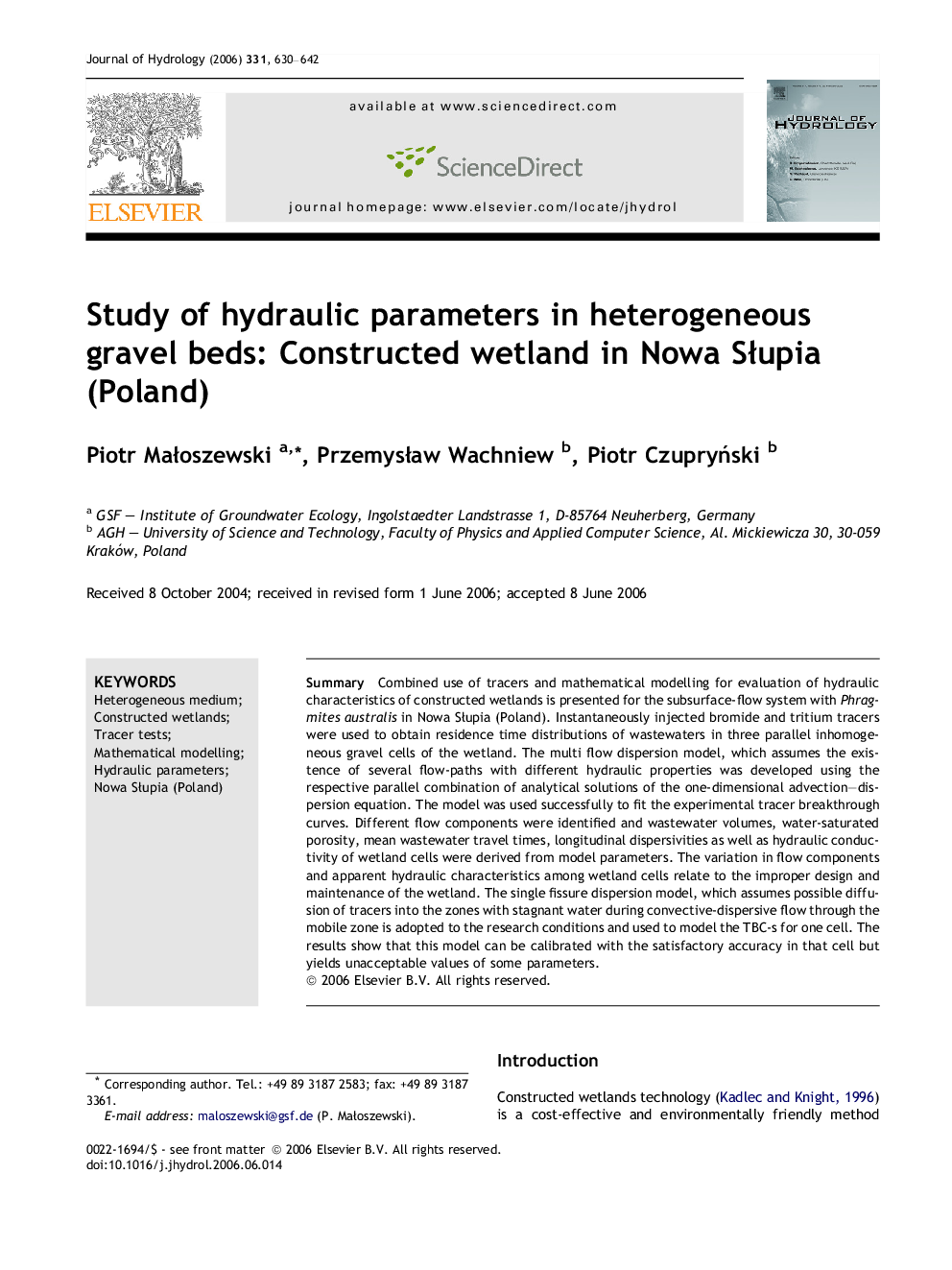| Article ID | Journal | Published Year | Pages | File Type |
|---|---|---|---|---|
| 4580205 | Journal of Hydrology | 2006 | 13 Pages |
SummaryCombined use of tracers and mathematical modelling for evaluation of hydraulic characteristics of constructed wetlands is presented for the subsurface-flow system with Phragmites australis in Nowa Słupia (Poland). Instantaneously injected bromide and tritium tracers were used to obtain residence time distributions of wastewaters in three parallel inhomogeneous gravel cells of the wetland. The multi flow dispersion model, which assumes the existence of several flow-paths with different hydraulic properties was developed using the respective parallel combination of analytical solutions of the one-dimensional advection–dispersion equation. The model was used successfully to fit the experimental tracer breakthrough curves. Different flow components were identified and wastewater volumes, water-saturated porosity, mean wastewater travel times, longitudinal dispersivities as well as hydraulic conductivity of wetland cells were derived from model parameters. The variation in flow components and apparent hydraulic characteristics among wetland cells relate to the improper design and maintenance of the wetland. The single fissure dispersion model, which assumes possible diffusion of tracers into the zones with stagnant water during convective-dispersive flow through the mobile zone is adopted to the research conditions and used to model the TBC-s for one cell. The results show that this model can be calibrated with the satisfactory accuracy in that cell but yields unacceptable values of some parameters.
